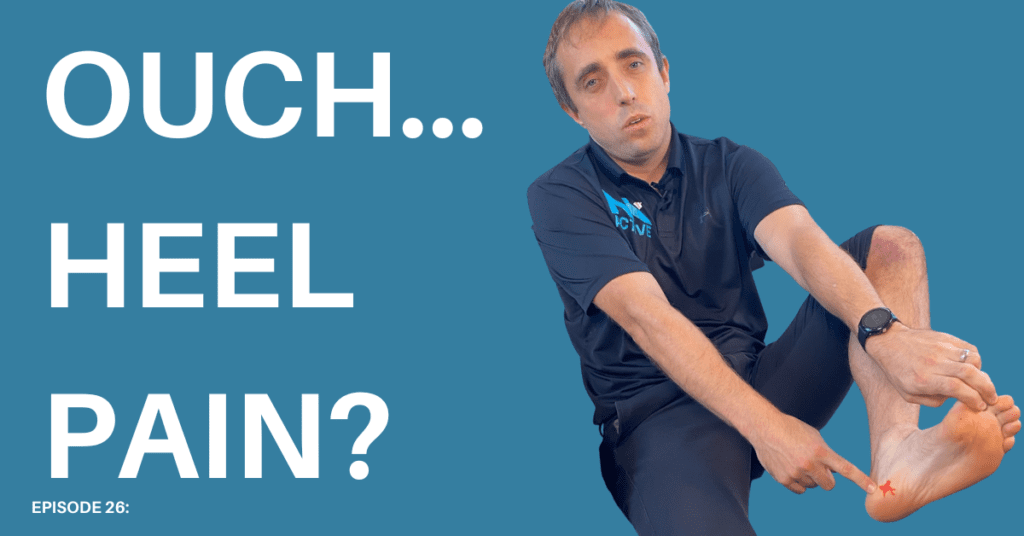
Diagnosing Plantar Fasciitis
Plantar Fasciitis is a thick fibrous tissue that sits from the base of the heel bone and then stretches across into the toes. It is something we see time and time again within clinic and a subject that we love to discuss. In this weeks episode of the NK Active podcast we thought that we would discuss how we go about diagnosing Plantar Fasciitis.
The three stages of Plantar Fasciitis
When we think about the problem of Plantar Fasciitis we think of it in three stages. In stage one you have the thickening of the plantar fascia itself. You may have been injured and it has ultimately gotten a little bit thicker. In stage two you may have irritated the fat pad of your heel, and in stage three you might be experiencing some bruising or bony oedema. You can experience all three of these stages independently or in some incidences they will all coincide at once. The more of these things you are experiencing at once will play a factor in how long the Plantar fasciitis takes to settle. This is why we see such a difference from patient to patient in how long it takes to recover.
If it’s not Plantar Fasciitis what else could it be?
Before diagnosing Plantar fasciitis it’s important to note that not all heel pain results in that diagnosis. So what else do we commonly see that is often mis-diagnosed as Plantar Fasciitis?
As podiatrists we would look at whether it could be tarsal tunnel. This is where the nerve gets inflamed and irritated and this could be due to injury, trauma or repetition. We tend to find that this creates a set of neurological symptoms for the patient which includes burning and tingling in the plantar heel area which can become incredibly uncomfortable.
It could also be something called a calcaneal fracture which is something we commonly see through the patient experiencing trauma or even Achilles tendinopathy. The symptoms can tend to move around the heel which sometimes makes it difficult to pin point.
How can you tell which stage of Plantar fasciitis you are experiencing?
So how can you tell yourself what stage possibly you might be at? If you are thinking about the thickening of the plantar fascia you’ll notice the pain will be worse as you go to push forward during your walking or running. If you’ve got some fat pad irritation, you’ll tend to find the pain is worse when your heel strikes the ground or during long periods of standing. And then with bone Oedema you’ll tend to find it aches and throbs at night and particularly at rest.
How to treat for Plantar Fasciitis
There are a number of ways to treat Plantar Fasciitis but there are two that probably have the most evidence around their effectiveness. One is shockwave therapy, which uses a device that has a ball bearing it that hits against the soft tissue the aim of that is to cause irritation so that it will kind of promote healing of those tissues. Secondly foot orthosis looks to support the plantar fascia to improve function in order to kind of offload it for a short or long period of time.
With the foot orthoses we are looking at how we can offload the plantar fascia so you can go about your daily activity without increasing the load through it too much.
Our aim here at NK Active is to help educate our patients about how to manage and live with this condition. Some of that will be through how to load manage. And what we mean by that is thinking about when and how, and the intensity that you do your activities, maybe going to work participating in sport going to the gym, and thinking about how we can work with your pain and symptoms so that you’re still able to do some aspects of that. If you’re doing too much you’re aggravating your signs and symptoms. The other thing we would want to think about is lifestyle choices. And in particular, we’re thinking about weight management. We know that if you are overweight and losing weight, this can have an effect on helping to ease some of those heel pain symptoms.
Strengthening and stretching exercises
Research suggests that strengthening and stretching exercise can be a useful tool in recovery and its something that we do a lot of at NK Active as we work with our patients through the rehabilitation process. The most important thing to remember is that we’re not just treating the plantar fascia, there is a person attached to it first. We need to take you as the patient into consideration as well as your heel pain. If we resolved your heel pain, or if we helped you to resolve your own heel pain, do you feel the rest of you is ready to go back to doing your level of activity?
It’s about increasing the strength and capacity through the foot and ankle, through the calf muscle and through the plantar fascial region. But we may also need to work on strength around the hips. It’s about building the stuff in that is targeted for you.
We are all individuals so the treatment journey you will go through will be different to your spouse who has had it or your best friend or your neighbour. The way that we like to try and think about is as though we as the podiatrists have a hypothetical toolbox. And each treatment modality is a different tool that can go into this toolbox. Our aim is to fill that toolbox as much as is needed so that you can complete all of your tasks that you want to do. And then as we educate you, you need to learn which tools you need to use for which job to get the outcome that you want.
You can then learn to live with this and learn to manage it to then to try and reduce the risk of your Plantar Fasciitis symptoms coming back and what to do if you do have a flare up.
Or listen on your chosen podcast platform here: https://kite.link/nk-active
You can also watch this current episode about Diagnosing Plantar Fasciitis on our YouTube channel.
